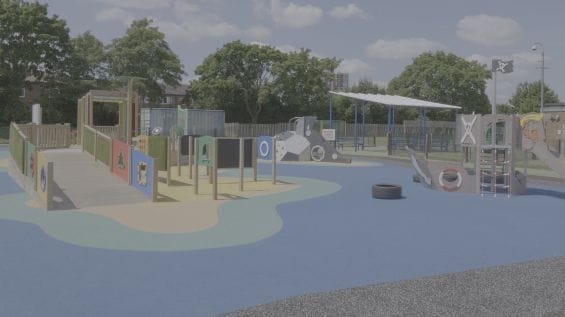
Jul

How Sensory Play Equipment Helps Children with SEN Thrive
Creating inclusive outdoor spaces is no longer a nice-to-have; it’s essential. For schools, councils, and SEN settings, sensory play equipment offers more than just fun. It provides a foundation for development, confidence-building, and connection for children with Special Educational Needs (SEN).
Sensory play equipment helps children with SEN develop motor skills, build confidence, and engage socially. From tactile panels to calming zones, these inclusive spaces support learning and emotional well-being. Perfect for schools, parks, and therapy settings, they provide every child with the opportunity to thrive through sensory-rich outdoor play.
Whether it’s a textured path underfoot, interactive panels that stimulate the senses, or calming zones for quiet reflection, sensory play spaces give every child the chance to thrive in their own way.
What is Sensory Play Equipment?
Sensory play equipment is designed to engage a child’s senses, including touch, sound, sight, movement, and balance in a safe and stimulating environment. It can include:
♦ Musical instruments like drums or chimes.
♦ Tactile panels with different textures or materials.
♦ Movement-based features such as swings, or see-saws.
♦ Interactive items like play panels with buttons, mirrors, spinners, or sliders.
♦ Sensory surfacing such as mulch, rubber textures, or patterned wetpour.
This type of equipment is especially beneficial for children with autism, ADHD, learning difficulties, or other sensory processing needs.
The Benefits of Sensory Play for SEN Children
♦ Supports Developmental Goals
Sensory equipment encourages physical coordination, cognitive development, and emotional regulation. Activities like balancing, jumping, and spinning stimulate the vestibular and proprioceptive systems, which are important for motor skills and spatial awareness.
♦ Encourages Communication and Social Interaction
Many sensory items are designed for shared use, helping children build social confidence. For non-verbal children, the equipment can become a tool for expression or interaction, reducing anxiety and promoting inclusion.
♦ Reduces Overstimulation and Anxiety
Unlike traditional busy playgrounds, sensory spaces can include calm, focused areas with gentle textures and low-stimulus features. This gives children a safe place to retreat, reset and re-engage when they’re ready.
♦ Inclusive by Design
Sensory equipment bridges the gap between children of all abilities. It creates an environment where everyone can play together without needing to adapt or exclude. This supports the core principles of inclusive education and outdoor play.
Where to Install Sensory Play Equipment
Schools: Ideal for SEN units, early years zones, and quiet corners within mainstream playgrounds.
Public Parks: Sensory trails and multi-sensory zones are becoming more common in local authority play areas.
Specialist SEN Settings: Can include a combination of sensory circuits, tactile trails, and interactive equipment tailored to individual needs.
Healthcare or Therapy Centres: Sensory play supports occupational therapy goals and can be used in both group and one-to-one sessions.
At Caloo, we work closely with schools and local councils to design sensory spaces that suit each site’s specific needs. This includes free consultations, layout planning, and in-house installation.
Design Tips: What Makes a Good Sensory Play Space?
Zoning: Divide areas into active zones (movement), creative zones (sound and interaction), and calm zones (quiet and reflective).
Surfacing: Use different textures like rubber mulch, wetpour patterns, or grass mats for tactile feedback.
Balance of Stimuli: Include both high- and low-stimulation items to prevent sensory overload.
Accessibility: Ensure pathways are wide enough for mobility aids and that ground-level equipment is easy to reach.
Ready to Transform Your Outdoor Space?
Caloo has installed sensory play equipment in schools and council spaces across the UK, helping children with SEN thrive through well-designed, inclusive outdoor environments. Whether you’re starting from scratch or refreshing an existing area, we offer free site consultations and a complete design-to-installation service. Get in contact today with our team to book your site visit.

















